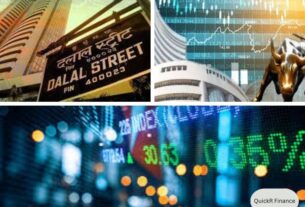The history of financial bubbles and crashes can be traced back centuries, and they have occurred in various forms and sectors of the economy. A financial bubble occurs when prices of assets become significantly inflated due to excessive buying, often caused by speculation or irrational exuberance. When the bubble bursts, prices collapse, leading to a crash, which can have devastating effects on the economy and investors. In this article, we will explore some of the most significant bubbles and crashes in history, along with their dates and numbers.
The Tulip Mania Bubble (1637) :
One of the earliest and most well-known examples of a financial bubble is the Tulip Mania bubble that occurred in the Netherlands in the 17th century. The Dutch became obsessed with tulips, and prices for tulip bulbs skyrocketed, with some bulbs selling for the price of a house. However, by February 1637, the bubble burst, and tulip prices plummeted by 99%, causing widespread financial ruin.
The South Sea Bubble (1720) :
In the early 18th century, the British government established the South Sea Company, which was granted a monopoly on trade with South America. The company’s stock became wildly popular, and its price rose sharply, fueled by speculation and fraudulent practices. However, in September 1720, the bubble burst, and the stock’s value plummeted by 90%, causing a financial crisis that lasted for years.
The Railroad Bubble (1840s) :
In the mid-19th century, the railroad industry was booming in the United States, and railroad stocks became incredibly popular. However, many railroad companies were not profitable, and investors were buying stock based on speculation rather than sound financial fundamentals. By the late 1840s, the bubble burst, and many railroad companies went bankrupt, causing widespread financial hardship.
The Florida Real Estate Bubble (1920s) :
In the 1920s, Florida experienced a real estate boom, with developers buying up land and selling it to investors at inflated prices. The bubble was fueled by speculation and false promises of a prosperous future for the state. However, by 1926, the bubble burst, and land values plummeted, causing widespread bankruptcies and financial ruin.
The Stock Market Crash of 1929 :
Perhaps the most well-known financial crash in history is the stock market crash of 1929, which was the catalyst for the Great Depression. In the 1920s, the U.S. stock market was booming, and many investors were buying on margin, meaning they were borrowing money to buy stocks. However, in October 1929, the bubble burst, and the stock market crashed, causing widespread panic and a severe economic downturn.
The Dot-Com Bubble (1990s-2000s) :
In the 1990s, the internet was a new and exciting industry, and many investors saw enormous potential in dot-com companies. However, many of these companies had never turned a profit, and their stock prices were based on speculation rather than financial fundamentals. By 2000, the bubble burst, and many dot-com companies went bankrupt, causing widespread job losses and financial hardship.
The Housing Bubble (2000s) :
In the early 2000s, the U.S. housing market was booming, with many people buying homes at inflated prices, often with subprime mortgages that they could not afford. The bubble was fueled by speculation and fraudulent lending practices. However, by 2007, the bubble burst, and home prices plummeted, leading to a global financial crisis that lasted for years.
Lehman Brothers Crisis (2008) :
The Lehman Brothers crisis was a major event that occurred during the 2008 financial crisis. Lehman Brothers was a large investment bank based in New York City, and it had been heavily involved in the subprime mortgage market leading up to the crisis.
In September 2008, Lehman Brothers announced that it was filing for bankruptcy. This news sent shockwaves through the financial world, as Lehman Brothers was one of the largest investment banks in the world at the time.
The bankruptcy of Lehman Brothers triggered a widespread panic in financial markets and a freeze in lending. Many financial institutions that had invested in Lehman Brothers’ securities suffered significant losses, leading to further bankruptcies and bailouts.
The crisis led to a global recession and had a significant impact on the world economy, leading to massive job losses, foreclosures, and a decline in consumer confidence. Governments and central banks around the world took a range of measures to address the crisis, including massive financial bailouts of failing institutions, interest rate cuts, and stimulus spending.
The collapse of Lehman Brothers was a pivotal moment in the financial crisis, and it is widely considered to be one of the most significant events in the history of modern finance. The crisis highlighted the risks of excessive leverage and the need for greater regulation of the financial sector.
The Cryptocurrency Bubble (2017-2018) :
In late 2017, the price of Bitcoin, the most well-known cryptocurrency, began to skyrocket, driven by speculation and a surge in demand from investors. By December 2017, the price of Bitcoin had reached an all-time high of nearly $20,000 per coin. However, in early 2018, the bubble burst, and Bitcoin prices began to decline rapidly, losing over 80% of their value in less than a year. Other cryptocurrencies, such as Ethereum and Ripple, also experienced significant declines in value.
The Cannabis Bubble (2018-2019) :
In 2018, Canada legalized the use of recreational marijuana, leading to a surge in demand for cannabis stocks. Many companies that produced or sold marijuana saw their stock prices rise sharply, leading to a bubble in the cannabis industry. However, by mid-2019, the bubble burst, and many cannabis stocks began to decline rapidly, leading to significant losses for investors. For example, shares of Canopy Growth Corporation, one of the largest cannabis companies in the world, fell by over 60% from their peak in 2018 to their low in 2019.
The COVID-19 Crash (2020) :
In early 2020, the outbreak of the COVID-19 pandemic caused global financial markets to experience significant volatility. In March 2020, the stock market in the United States experienced a sharp decline, with the Dow Jones Industrial Average falling by over 35% in just a few weeks. This crash was driven by fears of the economic impact of the pandemic and uncertainty about the future. However, the stock market has since rebounded, and by early 2021, the Dow Jones had reached new all-time highs.
Conclusion
Financial bubbles and crashes have been a part of the economic landscape for centuries, and they have had devastating effects on investors and the broader economy. While it is impossible to predict when the next bubble will occur, it is crucial for investors to consider financial bubbles and crashes have been a recurring phenomenon throughout history, and the 21st century has been no exception. While bubbles can be exciting and lucrative for investors, they can also have devastating effects on the economy and individuals when they burst. It is essential to be cautious and invest based on sound financial fundamentals rather than speculation and hype.





